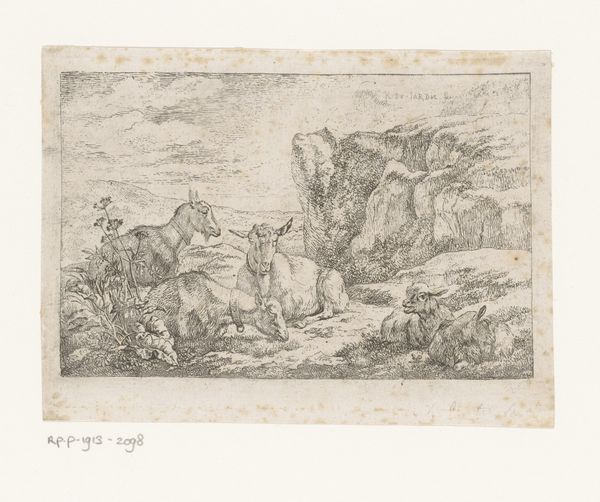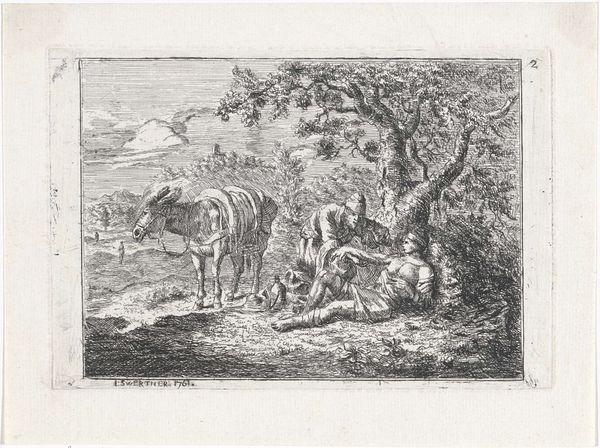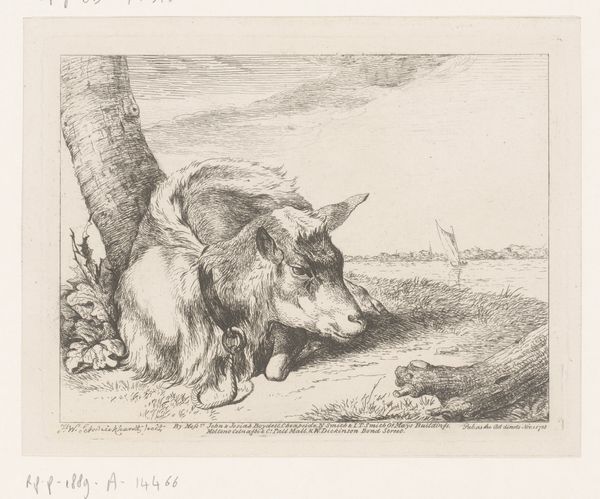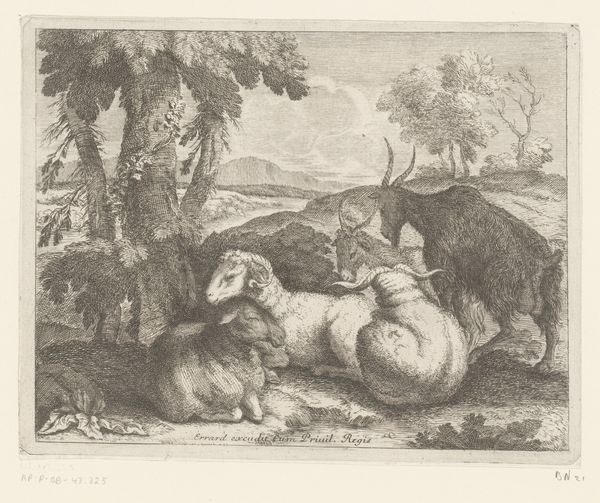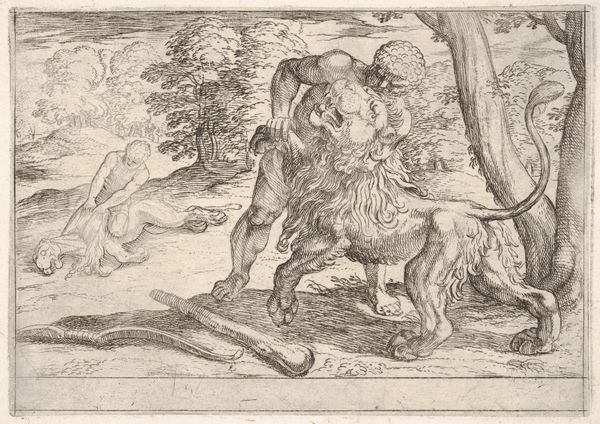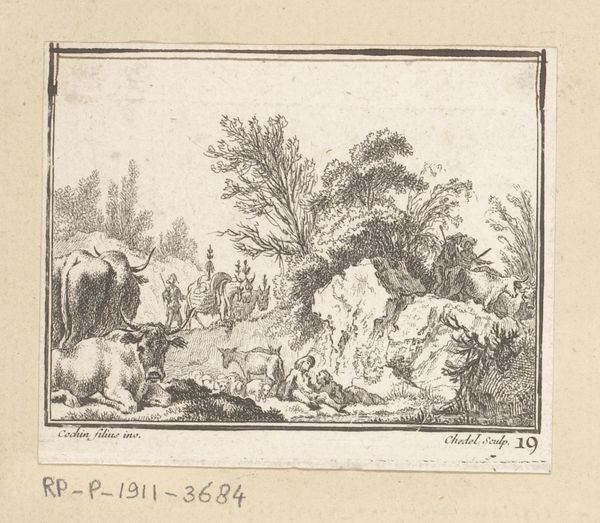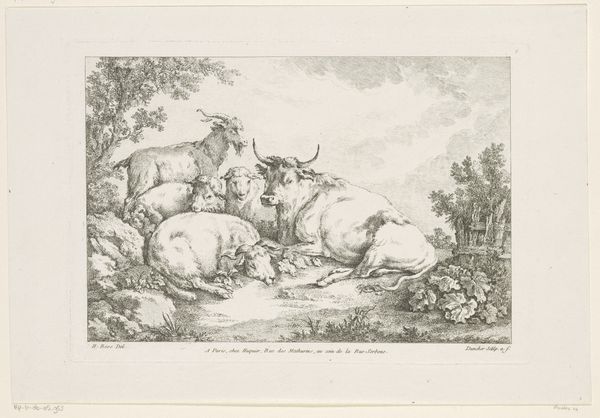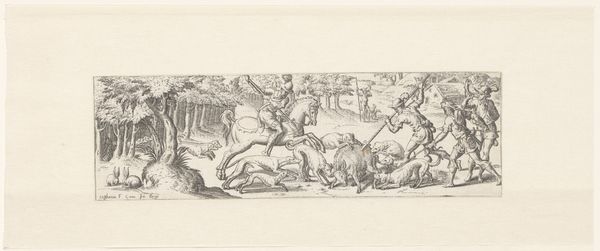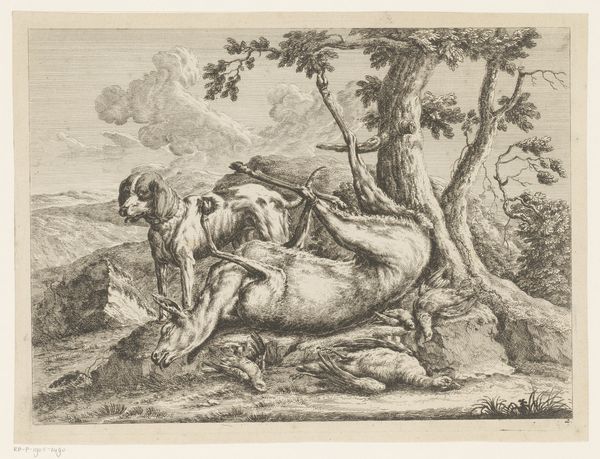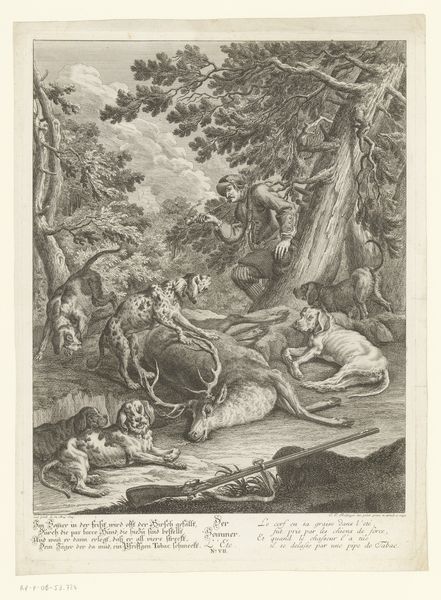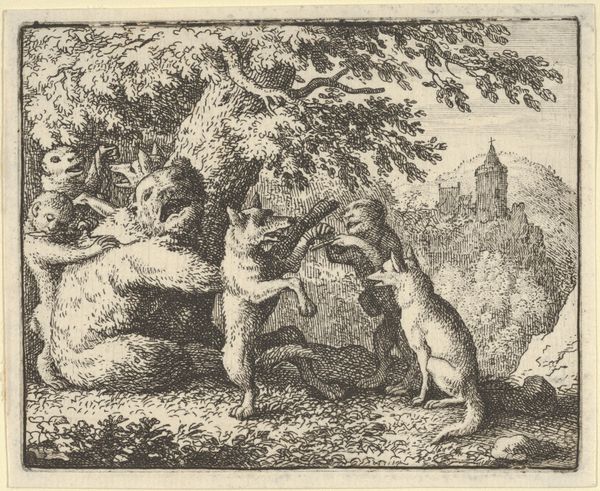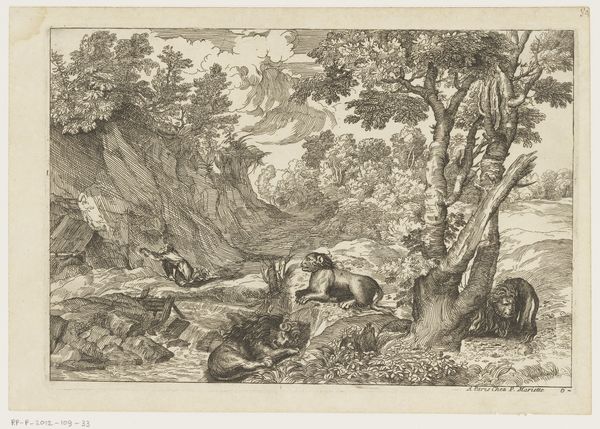
drawing, print, engraving
#
drawing
#
baroque
#
animal
# print
#
landscape
#
engraving
Dimensions: height 122 mm, width 164 mm
Copyright: Rijks Museum: Open Domain
Curator: We’re looking at a drawing, or perhaps more accurately, an engraving titled "Liggende geit en schaap bij een antieke ruïne"—that is, "Reclining Goat and Sheep by an Antique Ruin." It’s attributed to Johann Heinrich Roos, made sometime between 1641 and 1685. It's part of the Rijksmuseum's collection. Editor: It's interesting—I immediately notice the density of the line work, the way the texture of the animals’ coats and the ruin are built up through meticulous engraving. You can almost feel the coarse wool and rough stone. Curator: Yes, Roos was known for his depictions of animals within idyllic landscapes. Here, he seems to be drawing on the classical tradition, contrasting the Arcadian simplicity of the animals with the decaying grandeur of the ruin. It speaks to a nostalgic view of the past, a common theme during the Baroque era. Editor: It is interesting how he juxtaposes these motifs! Consider also the labour involved in producing these engravings. The artist has had to employ metal tools to manually gouge into what must have been a plate of metal or other equally ridged material. This in itself makes this artwork all the more precious to observe because of the evidence left behind from the intensive manual labour. Curator: I think your point about labor is very valid; engraving was a demanding craft. But it was also a medium that allowed for wider distribution of images. Roos, as an artist, would have wanted his work to be circulated among collectors, and prints were a key part of the artistic ecosystem at the time. His market catered to particular kinds of elite viewers. Editor: True. Yet looking at the material outcomes, what really remains for me is this tangible link to a time and process so vastly different from the digital reproduction we’re engaged with right now. Curator: Indeed, it's a reminder that even images of seemingly timeless, pastoral scenes are deeply embedded in the socio-economic realities of their time. They served distinct functions for both artists and audiences, influencing both production and reception. Editor: Absolutely. So much is expressed in a singular image. From the natural fibres of wool, the man-made nature of architecture, and the intensive carving into hard printing plates, we understand much about production and consumption by simply looking carefully.
Comments
No comments
Be the first to comment and join the conversation on the ultimate creative platform.
